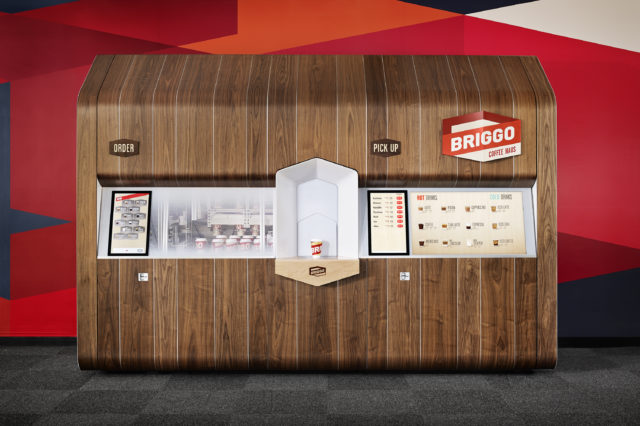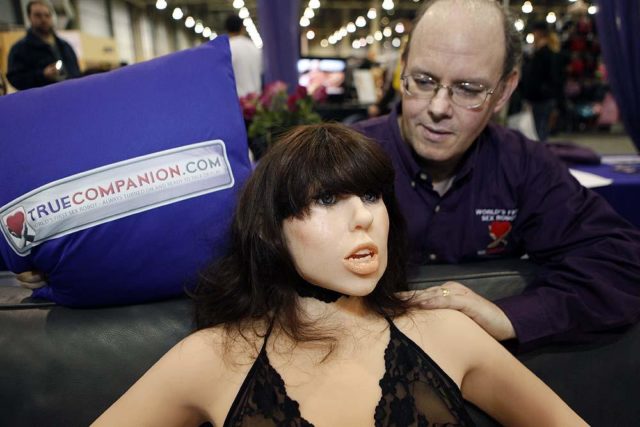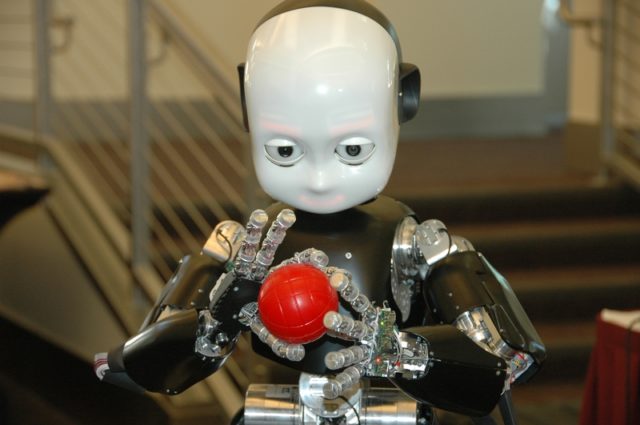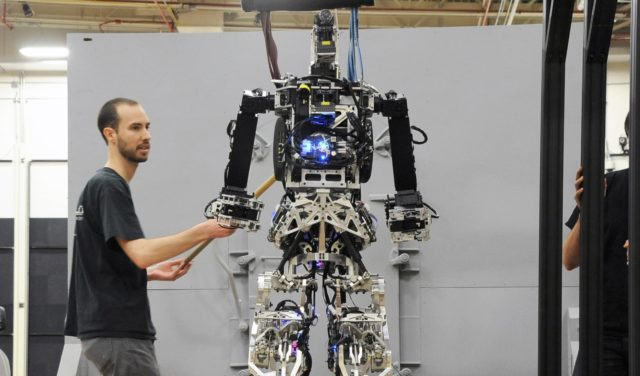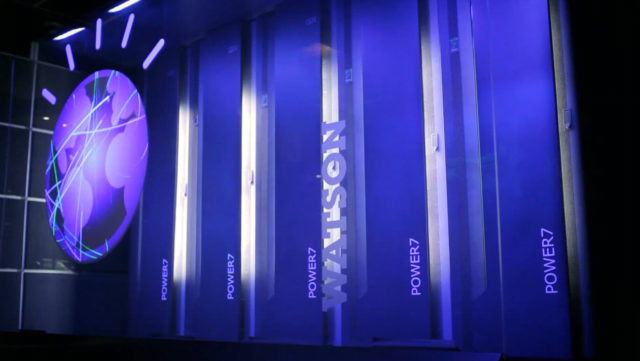A Mechanical Revolution is taking place all around us. It’s still in its inception, but progress is constantly accelerating. This is a process by which we exchange more and more human laborers in favor of mechanical ones. We’ve been doing that, in one form or another, ever since we discovered the first tools, but today we don’t only exchange the human muscle for mechanical ones — we exchange the mind as well. Here are some examples of what’s to come.
10. The Self-Driving Car
Companies like Google and Bosch have been developing self-driving cars for years. These automated vehicles have been taken on test drives for countless hours and have proven their worth time and time again. Remember, these cars don’t have to be perfect — they just have to be better than us. By eliminating fatigue, distracted driving, boredom and even blinking, they rule out human error right from the start.
Their first commercial use will most certainly be in the transportation of goods. With over four million people currently employed in the transportation business in the United States, this development could be a serious economic problem in the near future. It’s no longer a matter of “if,” but rather of “when” these automated vehicles take over the road.
9. Baxter –The Multi-purpose Robot
Baxter can do many low-skilled jobs like bartending, folding clothes, packing boxes, etc. It can learn what it has to do by looking at people doing it, and can be taught a multitude of actions that are in reach of his swirling arms. It works somewhat slower than people do, but the cost of maintaining it is a fraction of what a normal wage is, and its speed and accuracy are being improved on a daily basis.
Similar robots have been around for some time now, acting as cashiers in some grocery stores and fast food chains. With the recent protests around raising the minimum wage in the United States, more and more businesses are thinking about changing their human workforce into a mechanized one to stay competitive.
8. Briggo Coffee
Coffee is one of the most consumed beverages in the world, and so it’s no surprise that someone is trying to get a head start when it comes to mechanizing the industry. By developing a sophisticated robotic kiosk capable of making numerous types of coffee drinks with a push of a touch screen, the Briggo Company will be able to compete with some of the giants in the industry like Starbucks and Tim Hortons.
The technology will allow you to preorder your coffee before leaving your home. Through a phone app, Briggo will be able to know each customer’s preferences and make the exact same coffee every time, anywhere in the world. This device, being so user friendly and easily accessible, will most certainly be the source of coffee for millions around the planet, forcing the big players to rethink their operating strategy.
7. Roxxxy – The Other “Multi-purpose” Robot
Not even the “oldest job in the world” will be safe once Roxxxy hits the streets — she’s designed by the TrueCompanion Company to be the first ever sex robot. They’ve tried to make her as realistic as possible, not only in terms of anatomy but in terms of personality. Her customers can chose from a variety temperaments and emotions, ranging from shy to S&M mode. Weighing only 60 pounds, Roxxxy can perform a multitude of actions which we’ll let you imagine for yourselves. She can even come in different skin colors, body shapes and with a knowledge of various foreign languages.
Predictions made by some New Zealand researchers say that by 2050 the sex tourism business will be totally revolutionized by robots such as Roxxxy, arguing that “robot sex is safer sex, free from the constraints, precautions and uncertainties of the real deal.” But don’t despair, ladies — the company is also designing a male version called Rocky.
6. iCub – The Talker
The iCub is a toddler looking robot capable of understanding different languages and responding accordingly. Like Baxter, the iCub is able to learn from people, but more in terms of languages and speech patterns. The ultimate goal for the team in charge of iCub is to make it resemble a human being as much as possible. Besides speech, it’s also taught how to crawl on all fours like a baby, stand up and manipulate things around it. They’re currently trying to give it the sense of touch and the ability to recognize how much force is needed to safely interact with each object in its environment.
5. SAFFiR – The Firefighter
The US Navy has created a shipboard autonomous firefighting robot called SAFFiR designed to fight fires. This five foot, biped humanoid robot is capable of detecting fires, operating the nozzle on hoses, navigating obstacles, and keeping its balance in all kinds of sea conditions.
It’s currently being tested on a decommissioned Navy ship which is regularly set on fire for this purpose. The end result will be a fully autonomous robot fitted with a series of sensors like gas sensors, infrared and UV cameras, making the SAFFiR capable of seeing through thick smoke and recognizing areas with excessive heat. It will also have knowledge of the ship’s layout, will regularly patrol the vessel in search on any potential risks, and will even interact with the crew for better coordination in case of disaster. The idea is for SAFFiR to work together with the crew in the event of a fire, but when things get dire, these robots, due to their thermal shielding equipment, can access areas which even the most experienced firefighters can’t reach.
4. Trader Bots – The Wall Street Stock Brokers
Besides the tangible world, where we can actually see robots in action, the digital world is also beginning to get crowded with all sorts of AIs. Some of these software bots are already trading with each other on the stock market, and what’s fascinating about them is that they’re a result of a series of algorithms and neural networks capable of predicting stocks. They’re designed in such a way that these “electrical minds” can learn from each other or resolve problems which they haven’t faced before. This development into bot creation lowers the need for supervising humans taking part in Wall Street. That’s why today the floor of the New York Stock Exchange is no longer a tightly packed room full of people screaming at each other and throwing sheets of paper every each way, but rather more of a TV news room broadcasting the events taking place.
3. Watson – The Doctor
This technological marvel is the product of IBM and wants to be a doctor. It’s already capable of storing much more medical data about illnesses, patient histories, and drug compatibilities and reactions than any human doctor ever could. It will even be available on our phones in the not so distant future, and will also be able to understand people describing their ailments in their own words across many languages.
Like the self-driving car, Watson doesn’t need to be perfect, just better than human doctors who, even after many years of intense study and practice, can and sometimes do get it wrong. These unfortunate and inevitable accidents happen, not because doctors are sloppy or aren’t prepared, but because the entire medical database is extremely vast and increasing every day. No one person will ever be able to know it all! Watson, on the other hand, will be the entire accumulation of human medical knowledge and can be a great tool in helping doctors make the right decision, at least in the beginning.
2. Digital Aristotle – The Teacher
Like the original flesh and blood Aristotle of ancient times, regarded by many as the perfect tutor, so will be the case for his digital version. While still in the conceptual stage, the concept is exciting.
Many of us agree that the current educational system of a “one size fits all” curriculum isn’t ideal. Many students fall behind and are unable to catch up, while others are already ahead and the class is holding them back. It’s estimated that in a class of roughly 30 students only one or two are actually learning something new at any given time, while the rest either already know the current lesson, fruitless try to memorize the whole thing, or just give up.
Digital Aristotle aims to be personalized for every student, aiding them at their own pace and offering new and interesting information so everyone is always engaged in learning. Like Watson, Digital Aristotle will essentially be a huge database of up-to-date human understanding that can even help researchers and scientists in their work.
1. The Artists
There’s such a thing as a creative bot, and “her” name is Emily Howell. She creates music which can’t be distinguished from music written by human composers in a blind test. Other programs out there can write news articles and monthly reports that white collar workers have to fill out on a regular basis. Whether you’ve picked up a newspaper lately or keep up with the news on the Internet, chances are that you’ve already read a story written by a bot and didn’t even realize it.
And there are your painting bots like the WaterColorBot, which can replicate any digital painting in the real world. Or e-David, which can be taught a specific painting style like impressionism, then replicate an image or photo in that style. While e-David isn’t creative in the true sense, it alone decides where shades need to be added or what colors to use.
All of these robots are only a small part of what’s to come in terms of mechanizing human activities, but we can only speculate as to the kind of future they’ll provide for us.


